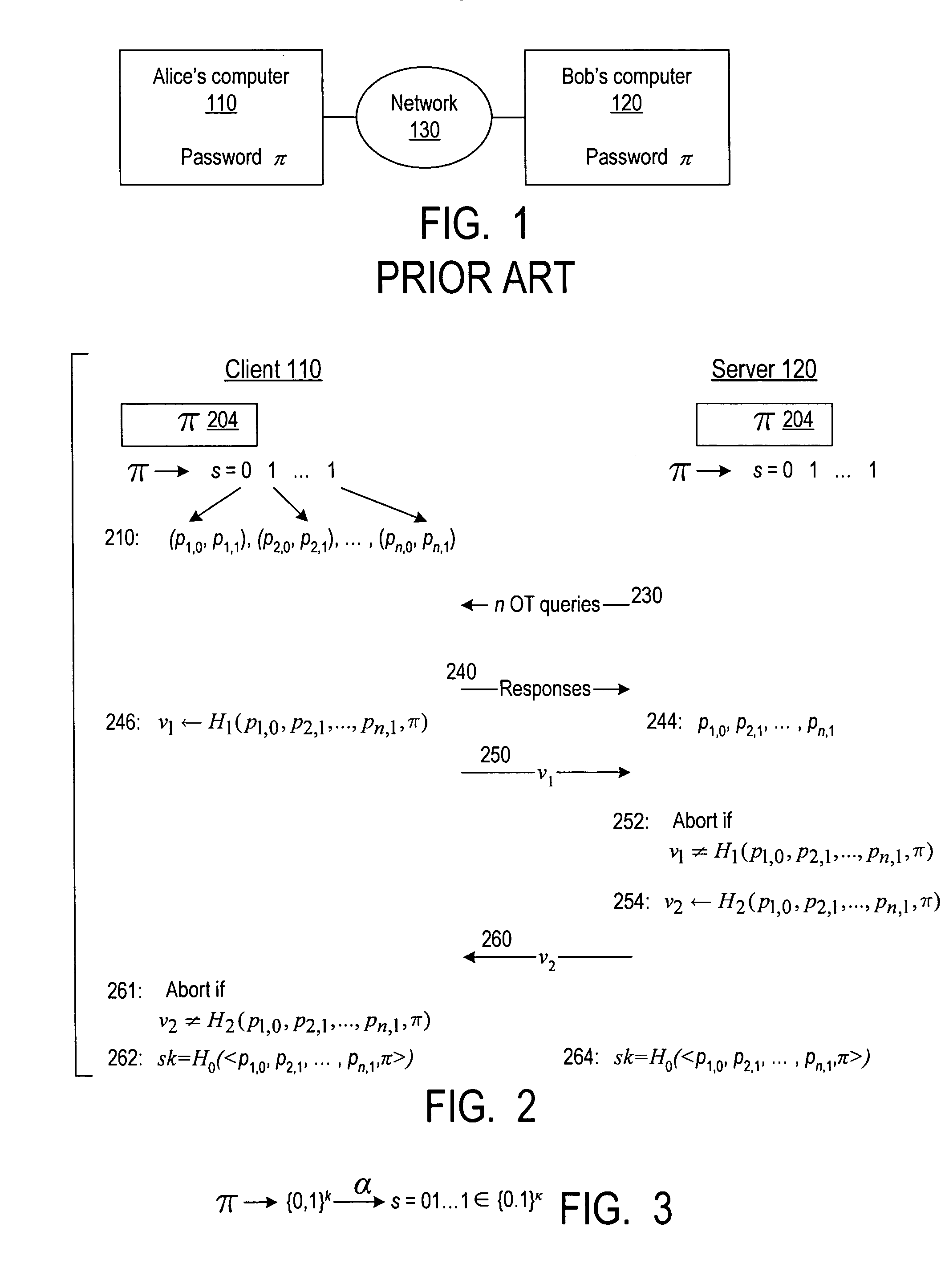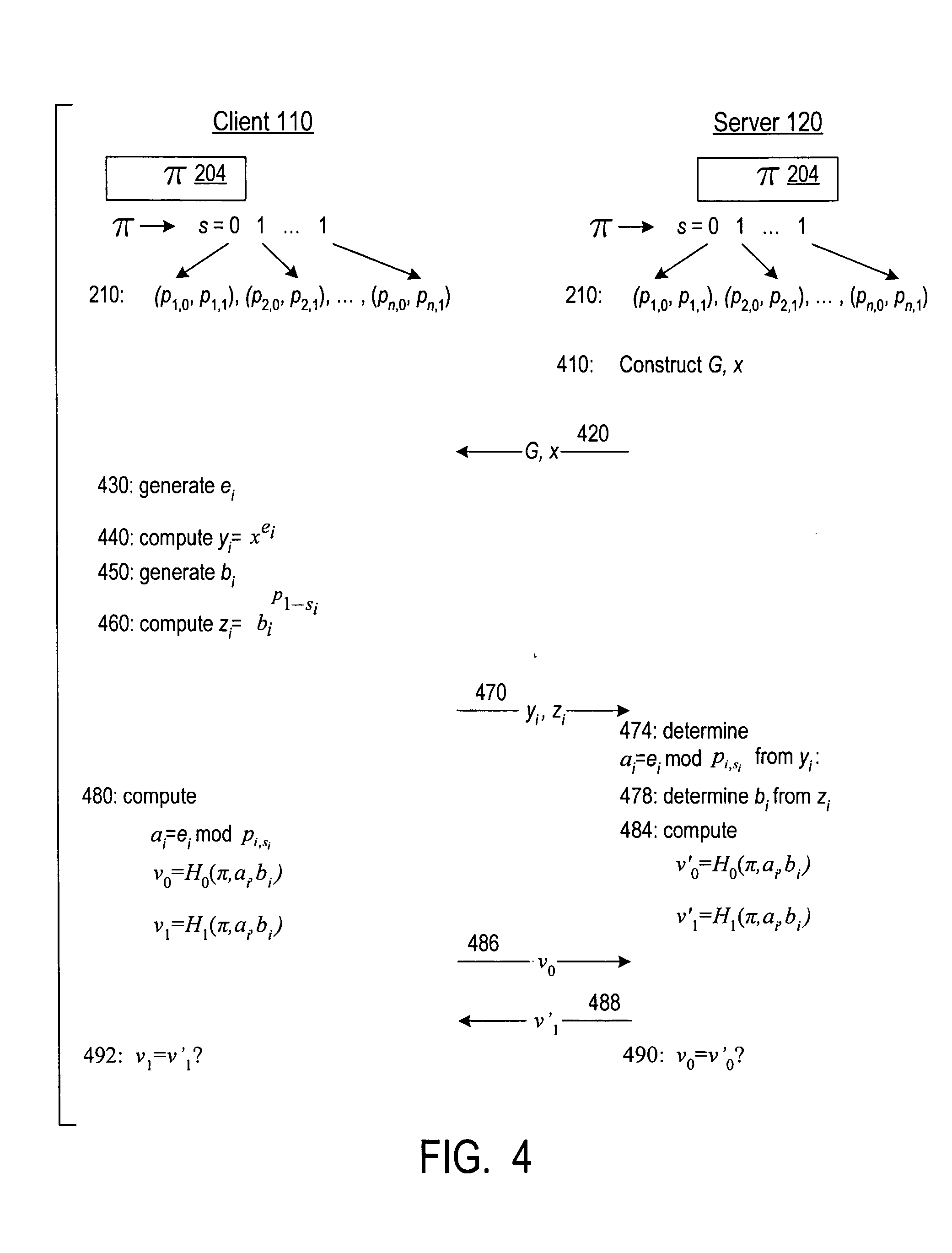Cryptographic authentication and/or establishment of shared cryptographic keys, including, but not limited to, password authenticated key exchange (PAKE)
a cryptographic key and cryptographic authentication technology, applied in the field of cryptography, can solve the problems of not being able to test all possible passwords, not being able to solve offline dictionary attacks, and not being able to verify password information obtained by the attackers, etc., and achieves the effect of reducing the probability, reducing the difficulty of offline dictionary attacks, and improving the efficiency of discrete logarithm problems
- Summary
- Abstract
- Description
- Claims
- Application Information
AI Technical Summary
Benefits of technology
Problems solved by technology
Method used
Image
Examples
Embodiment Construction
[0026] This section describes some embodiments of the invention. The invention is not limited by particular computations, processors, and other features. The invention is described by the appended claims.
[0027] In the following description, numerous details are set forth to provide a more thorough explanation of the present invention. It will be apparent, however, to one skilled in the art, that the present invention may be practiced without these specific details. In other instances, well-known structures and devices are shown in block diagram form, rather than in detail, in order to avoid obscuring the present invention.
[0028] Some portions of the detailed descriptions that follow are presented in terms of algorithms and symbolic representations of operations on data bits within a computer memory. These algorithmic descriptions and representations are the means used by those skilled in the data processing arts to most effectively convey the substance of their work to others skil...
PUM
 Login to View More
Login to View More Abstract
Description
Claims
Application Information
 Login to View More
Login to View More - R&D
- Intellectual Property
- Life Sciences
- Materials
- Tech Scout
- Unparalleled Data Quality
- Higher Quality Content
- 60% Fewer Hallucinations
Browse by: Latest US Patents, China's latest patents, Technical Efficacy Thesaurus, Application Domain, Technology Topic, Popular Technical Reports.
© 2025 PatSnap. All rights reserved.Legal|Privacy policy|Modern Slavery Act Transparency Statement|Sitemap|About US| Contact US: help@patsnap.com



